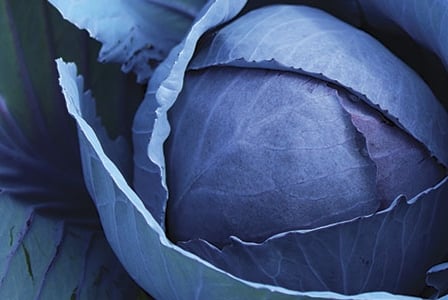
Feeling sluggish? These seven detoxifying foods will cleanse your body of toxins.
Smog, pesticides, heavy metals, chemical additives, allergens, and some bacteria and viruses are just a few of the many toxins the human body is regularly bombarded with. Thankfully, we can include detoxifying foods in our diets to give our hard-working bodies a helping hand.
Detox foods to the rescue
Although the body has an amazing built-in natural detoxification system that effectively neutralizes and eliminates toxic invaders, overexposure to harmful substances can take a toll.
Fatigue, sleep disturbances, bloating, headaches, and frequent infections are all signs that the body’s detoxification system may not be operating at its best.
Just like a car, the body runs on the fuel put in it. For the liver, kidneys, and other organs responsible for detoxification to perform optimally, the body needs optimal nourishment.
Packed full of free radical-fighting antioxidants, disease-combatting phytochemicals, and health-promoting vitamins and minerals, the following foods support and nourish the body as it cleanses itself of the many toxins it is exposed to daily.
Apple
Apples contain a significant amount of D-glucaric acid, a compound that is thought to enhance the body’s natural ability to rid itself of toxins, including potential carcinogens.
Apples are also a good source of cholesterol-lowering soluble fibre in the form of pectin. Emerging animal-based research from the National Food Institute at the University of Denmark suggests apple pectin may promote good digestion by increasing healthy bacteria that create an ideal pH balance in the intestine. Good digestion is essential in eliminating toxins from the body.
Eat it for: vitamin C, dietary fibre, and a plethora of disease-fighting phytonutrients including quercetin and chlorogenic acid
Try it: sliced and topped with almond butter for a detoxifying and satisfying snack
Beetroot
The deep red beetroot is a rich source of betaine, an essential compound required for cellular reproduction and proper liver function. The liver is one of the main organs responsible for breaking down harmful substances so they can be eliminated from the body. Betaine may protect the liver from fatty deposits.
Betaine may also protect the heart by helping to clear homocysteine from the blood. High blood levels of homocysteine have been linked to an increased risk of heart disease.
Eat it for: vitamin C, manganese, magnesium, and potassium, as well as folate, a substance that aids the body in the production of DNA and RNA
Try it: puréed in a blender with other fruits and vegetables for a refreshing morning smoothie
Cabbage
When chewed, chopped, or digested, cabbage releases isothiocyanates. Isothiocyanates are sulphur-containing compounds that are thought to protect the body against cancer in a number of ways, including inhibiting the enzymes that activate potential carcinogens and stimulating the enzymes that detoxify them.
Cabbage is also a source of the amino acid glutamine. Although the body produces glutamine naturally, when under stress the body’s stores of this essential nutrient are depleted. Glutamine plays an important role in immune function and digestion. It also helps to remove excess ammonia, a common byproduct of the body’s natural chemical processes, from the body.
Eat it for: vitamins B6, C, and K; dietary fibre; and folate
Try it: as raw sauerkraut (fermented cabbage), as the fermentation process produces healthy probiotic bacteria that are thought to promote good digestion
Dandelion
Often thought of as nothing more than a pesky weed, the dandelion is in need of an image makeover. Brimming with health-promoting vitamins and minerals, the dandelion is a nutritional superstar. Traditionally used to support kidney function, dandelion leaves are thought to act as a diuretic, helping the body to flush out excess fluid. Dandelion root is also thought to possess mild laxative properties and improve digestion.
Eat it for: vitamins A, B6, C, E, and K; thiamine; riboflavin; calcium; iron; and potassium, a mineral essential for normal digestion
Try it: mixed with other leafy greens to make an antioxidant-rich salad
Lemon juice
Traditionally used to reduce fluid retention and stimulate the liver, a little lemon juice in the morning may help jump-start digestion. Like other citrus fruits, lemons are an excellent source of vitamin C, a well-known dietary antioxidant. Antioxidants help the body to neutralize free radicals formed as a result of the breakdown of some food and toxins. A buildup of free radicals in the body is thought to lead to a number of illnesses, such as cancer, heart disease, and arthritis.
Eat it for: folate, potassium, and immune-boosting vitamin C
Try it: mixed with grated ginger, which has anti-inflammatory properties, to create a healthy salad dressing
Garlic
Used for centuries to cure nearly all that ails, a little garlic goes a long way to keep us healthy. The same sulphuric compounds that give garlic its pungent smell are proving to be useful at purging harmful bacteria and viruses from the body. In one preliminary study, researchers from Washington State University found the garlic compound diallyl sulphide to be more effective than antibiotics at killing the Campylobacter bacterium, a common cause of food poisoning.
Eat it for: vitamins B6 and C, calcium, and selenium, a mineral that promotes healthy thyroid and immune system function
Try it: raw, chopped finely, and mixed in with any dish
Watercress
Best known for its place at English afternoon tea, this peppery-tasting leafy green’s high antioxidant content may protect the body’s white blood cells from damaging free radicals. White blood cells defend the body against infectious disease. A study published in the American Journal of Clinical Nutrition found that healthy men and women who ate 85 grams (approximately 2 1/2 cups) of watercress daily for eight weeks reduced DNA damage to white blood cells.
Eat it for: protein and vitamins A, C, and K
Try it: in place of lettuce in a salad or sandwich
Opt for organic
To avoid potential pesticide contamination, choose organic for each of these detoxifying foods whenever possible. This is especially important in the case of apples, which the Environmental Working Group has rated as number one in its Dirty Dozen list—that means that apples were found to be the most heavily contaminated with pesticides.



